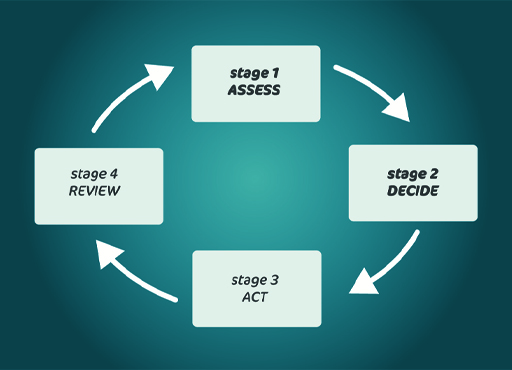5 Understanding tax codes
Understanding how income tax is deducted is important, but you also need to keep an eye on your tax code. This code tells your employer or pension provider how much income tax to deduct from your salary or pension. You can find your tax code on every payslip.
The code usually comprises four numbers and one or two letters – for example, 1250L. In Scotland, you’d see an S before it, and in Wales a C, so S1250L or C1250L.
The numbers define your tax-free personal allowance. You simply add a zero (0) to the end of the number, so in the example above your personal allowance would be £12,500 for the tax year.
The letter in the code defines the nature of your income. L is the most common letter in tax codes as it applies to most people who have just one job – be it full-time or part-time.
There are two tax forms that you will become familiar with in your working life:
- P60: the annual statement of how much you’ve earned that tax year and how much you have paid in income tax and other deductions. You will normally receive this from your employer within two months of the end of each tax year (5 April).
- P45: the statement of income paid and tax deducted so far for the year when you leave a job (called the ‘prevailing tax year’). This form needs to be passed to your new employer so that they know what your tax code is, and how much tax you have already paid in the tax year.
The table below sets out the main alternative letters used by HMRC in their tax coding.
| Code | Explanation |
|---|---|
| L | You are entitled to the standard tax-free personal allowance |
| M and N | These relate to additional marriage allowances some people are eligible for |
| K | For someone whose income is not taxed another way and which is worth more than the tax-free allowances |
| T | This code applies when the computation of tax due is made more complicated – for example by earning a very high income |
| 0T | Either your personal allowance has been used up (e.g. by being applied against another source of income) or you have started a new job and you don’t have a P45 form (see above) or your employer has insufficient details to give you your tax code |
| BR | All your income is taxed at the basic rate of tax – normally applies if you have more than one job or pension |
| D0 | All your income is taxed at the higher rate of income tax – normally applies if you have more than one job or pension |
| D1 | All your income is taxed at the additional rate of tax – normally applies if you have more than one job or pension |
| NT | This code applies if you are paying no tax on your income. It applies to those in some categories of self-employment |
| W1 and M1 | These are emergency tax codes (M1 if you are paid monthly, W1 if you are paid weekly). This means the tax is calculated only on the income earned in the current pay period, rather than an assessment of what you will earn on a full year. |
Emergency tax codes are usually updated automatically after you have given your employer your P45 (see above). If you’re on an emergency tax code for more than a month or two after starting a new job, it’s best to contact HMRC and ask them to send your employer an updated tax code. You will always start a new tax year with a normal tax code, not an emergency one.
Activity _unit3.6.1 Activity 1 What’s your tax code?
Take a look at your most recent payslip and check your income tax code.
Does the code look right given the information in Table 2 above?
Answer
If the code looks right there are no issues for you to address.
If it looks wrong you might want to first double check your understanding with your organisation’s payroll department. The payroll department cannot, though, change the code if it is wrong. Only HMRC can do this and so if there is an error you need to contact them
At the end of this session you’ll be provided with links to MoneySavingExpert’s tax code checker if you need further help.

